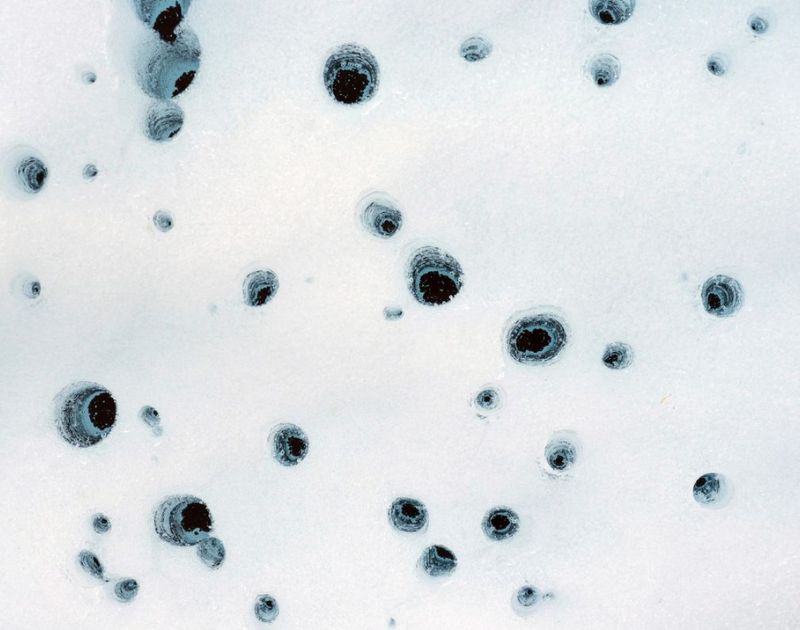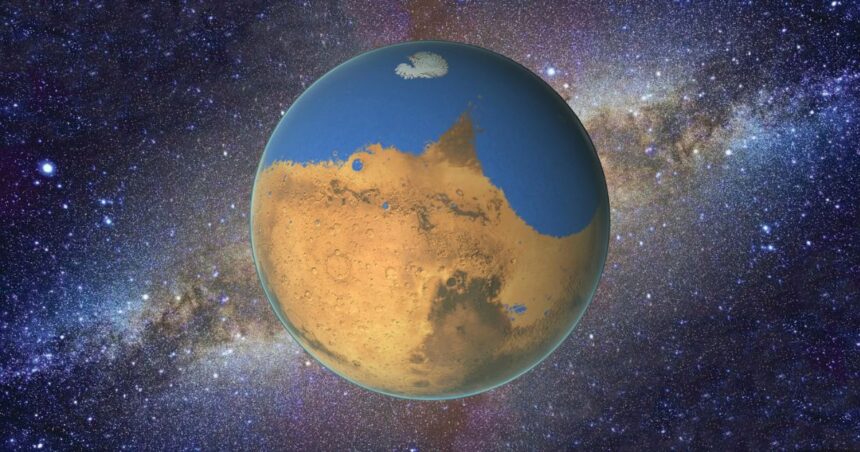As humans, we are always curious about extraterrestrial alien life, and we now have an answer. Scientists have found that Mars has alien life below its dusty ice surface. According to scientists, they saw something like the photosynthesis process below Mars’s surface.
You know that the reason there is no life on Mars is that the atmosphere on Mars is very thin; it has no global magnetic field. Due to the absence of a magnetic field, the Sun’s radiation and cosmic radiation directly hit the surface of Mars. Mars has low atmospheric pressure and cold temperatures, causing instability for liquid water on Mars.
Mars has two ice caps in its polar region, just like our Earth. Scientists’ recent study shows that these ice caps on Mars act like shields. It blocks high radiation and cosmic rays from the Sun and filters useful rays for photosynthesis.
Photosynthesis
The photosynthesis process produces chemical energy in living things like algae, plants and cyanobacteria. For this process, it requires water and sun light to proceed. Thick ice caps on Mars act as shields and pass sunlight for photosynthesis.
The current situation on Mars is different from the past, but there was a lot of water on Mars in the past. But as time passed, Mars lost its geomagnetic field. Solar winds release hydrogen out of the atmosphere and break down water vapour, causing evaporation of oceans.
Scientists are saying that even though we haven’t found any proof of life on Mars yet, we have chosen a location where we can easily see and decide whether or not there is life on Mars.
Research leader Aditya Khuller, a postdoctoral research fellow at NASA’s Jet Propulsion Laboratory, stated, “We are not saying we have found life on Mars, but we believe that dusty Martian ice exposures in the mid-latitudes represent the most easily accessible places to search for Martian life today.”
Icy Pockets
The scientific team used computer simulation and found that ice caps can melt from sunlight but not evaporate because of overlying ice-protecting shields. Here, we get two important factors for the process of photosynthesis, which are sunlight and liquid water. These ice pockets would be warm enough for life to exist.

Scientists have yet to see these photosynthesis process evidence on Mars. All these studies are based on the evidence of ice pockets from our planet Earth. According to scientists photosynthesis process is more likely to occur at mid-latitude areas of the Red Planet.
The study’s lead author, Aditya Khuller, said these icy areas are the most accessible places to search for Martian life today. If life ever existed on Mars, it might still be hiding in these icy spots.
This discovery is important because it gives scientists a new place to look for signs of life on Mars. Future missions to Mars could focus on these icy regions to search for alien life.
Editor’s Recommendations
- Euclid Space Telescope Reveals the 1% of Universe Map From Great Cosmic Atlas
- New Study Claims Dark Matter Doesn’t Exist and Universe is 27 Billion Years Old!!
- Stunning Views of Mars Solar Eclipse Captured By Perseverance Rover
- NASA’s Europa Clipper Begins Its Epic Voyage to Jupiter and its Icy Moon Europa





